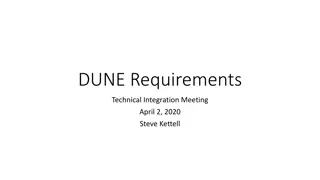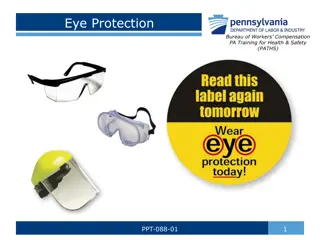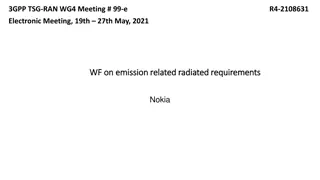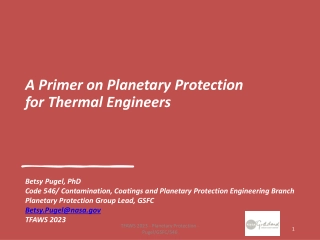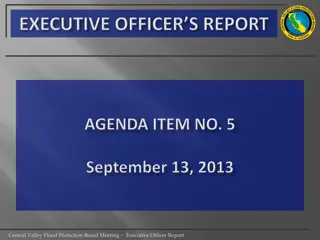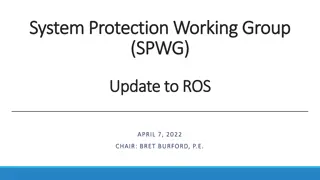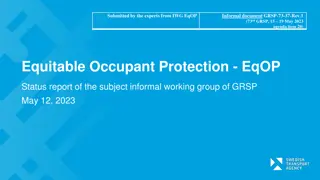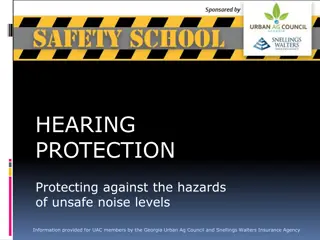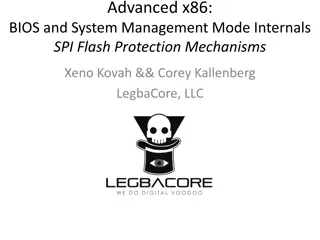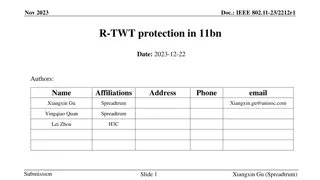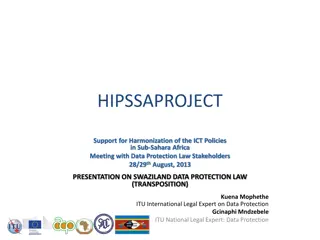UITF MPS System Requirements and Protection Details
Combining hardware configuration and CEBAF-style FSD protection, the UITF MPS system ensures laser safety, vacuum control, and GUN HV stability. It protects against beam loss, maintains UHV, safeguards viewers, magnets, RF components, and more through a series of interlocks and comparator systems. The hardware configuration includes valve control, current limiting resistors, water flow interlocks, and viewer activation protocols. FSD input signals trigger laser shutters, valve closures, and utilize sophisticated modules for safety. MPS timing requirements demand rapid processing for efficient output generation.
Download Presentation

Please find below an Image/Link to download the presentation.
The content on the website is provided AS IS for your information and personal use only. It may not be sold, licensed, or shared on other websites without obtaining consent from the author. Download presentation by click this link. If you encounter any issues during the download, it is possible that the publisher has removed the file from their server.
E N D
Presentation Transcript
UITF MPS system requirements MPS = a combination of hardware configuration and CEBAF-style FSD protection FSD trips will mostly turn OFF the laser, vacuum excursions will shutter laser and close valves GUN HV will not trip often
UITF MPS what will it protect? 1. 2. 3. 4. Protect the CM Protect against beam loss and burn-through, maintain UHV Protect viewers (this is a software interlock Not FSD) Protect magnets, ensure proper field for beam transport: comparator interlock, water flow or klixon interlocks Protect RF beamline components: vacuum and water flow interlocks Protect cups, apertures and dumps: water flow interlocks Protect HDIce (mostly, this means putting the beam where it is supposed to go, protect against mis-steered beam) 5. 6. 7.
Hardware configuration 1. Valves OPEN only when vacuum good 2. Current limiting resistors in series with magnets 3. Water flow interlocks at cups, dumps and apertures 4. Window comparators on dipoles and gun HV 5. Viewers inserted only when laser in pulsed-mode 6. Water flow interlocks at buncher and chopper cavities, RF can be applied to chopper and buncher only when vacuum reads good 7. Helium liquid level interlocked to klystron high power RF
FSD Input Signals 1. FSD trips will shutter laser and sometimes close all valves 2. BLMs will shutter laser: CEBAF-style BLM modules (x2) 3. LLRF control boards with CEBAF-style FSD signals 4. Vacuum FSD signals from CM. Helium liquid level interlocked to klystron control panel 5. All beamline ion pumps ganged together, close laser shutter and close all pneumatic valves when pressure exceeds a setpoint 6. Window comparators using 16 bit ADC cards designed by EES 7. HDice off target detector (qty 1, suspect it will look like a BLM)
Similar to CEBAF 1. SSG BLM chassis, x2 units 2. New LLRF control boards 3. Cryo and SRF signals from CM 4. Window comparators using 16 bit ADC cards designed by EES 5. FSD signals summed using VME boards with 12 input channels each 6. FSD signals transmitted via fiber at 5 MHz 7. SCAM to create low duty factor modes 8. CEBAF style pockel cell tune mode generator: RTP cell with <250ns response time, backed by shutter that closes 5-10ms later
MPS timing requirements All inputs should be processed to create an output within 10 micro-seconds (that s are goal, what we would work towards)
MPS system communications All inputs are visible to EPICS All outputs are shown on EPICS First fault detection is desirable and the first fault should be visible on EPICS EPICS should have the ability to mask or clear any input






